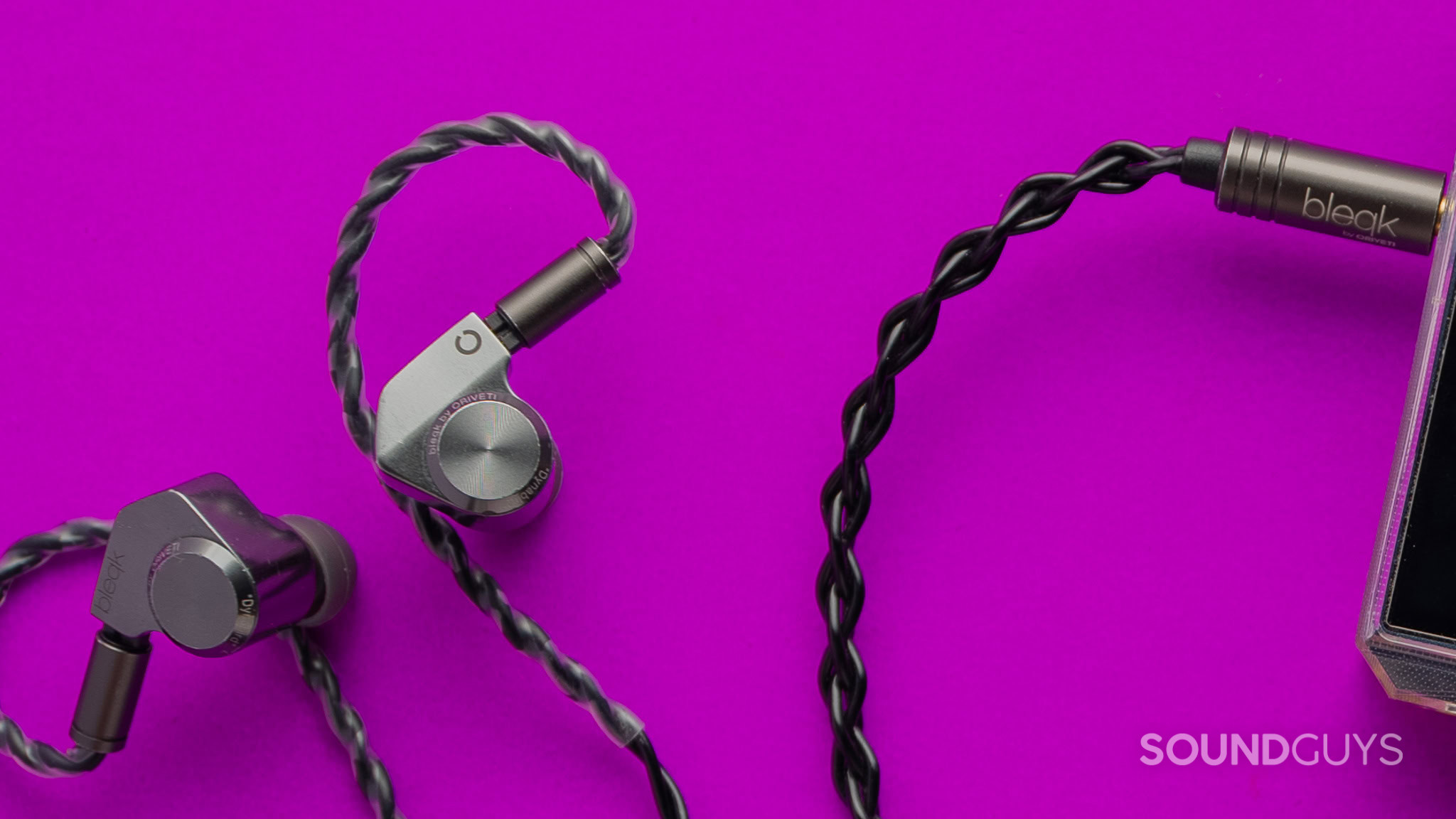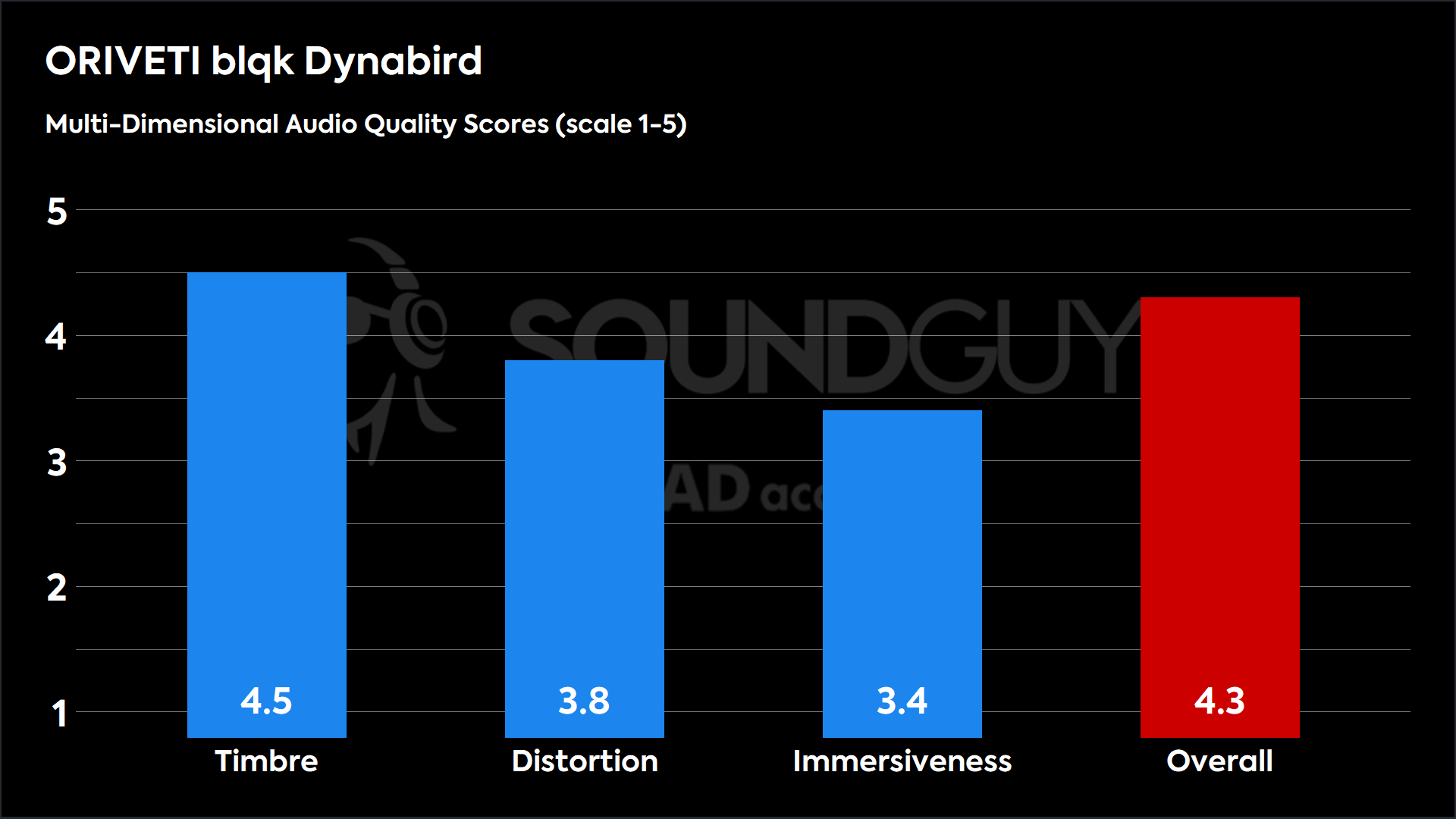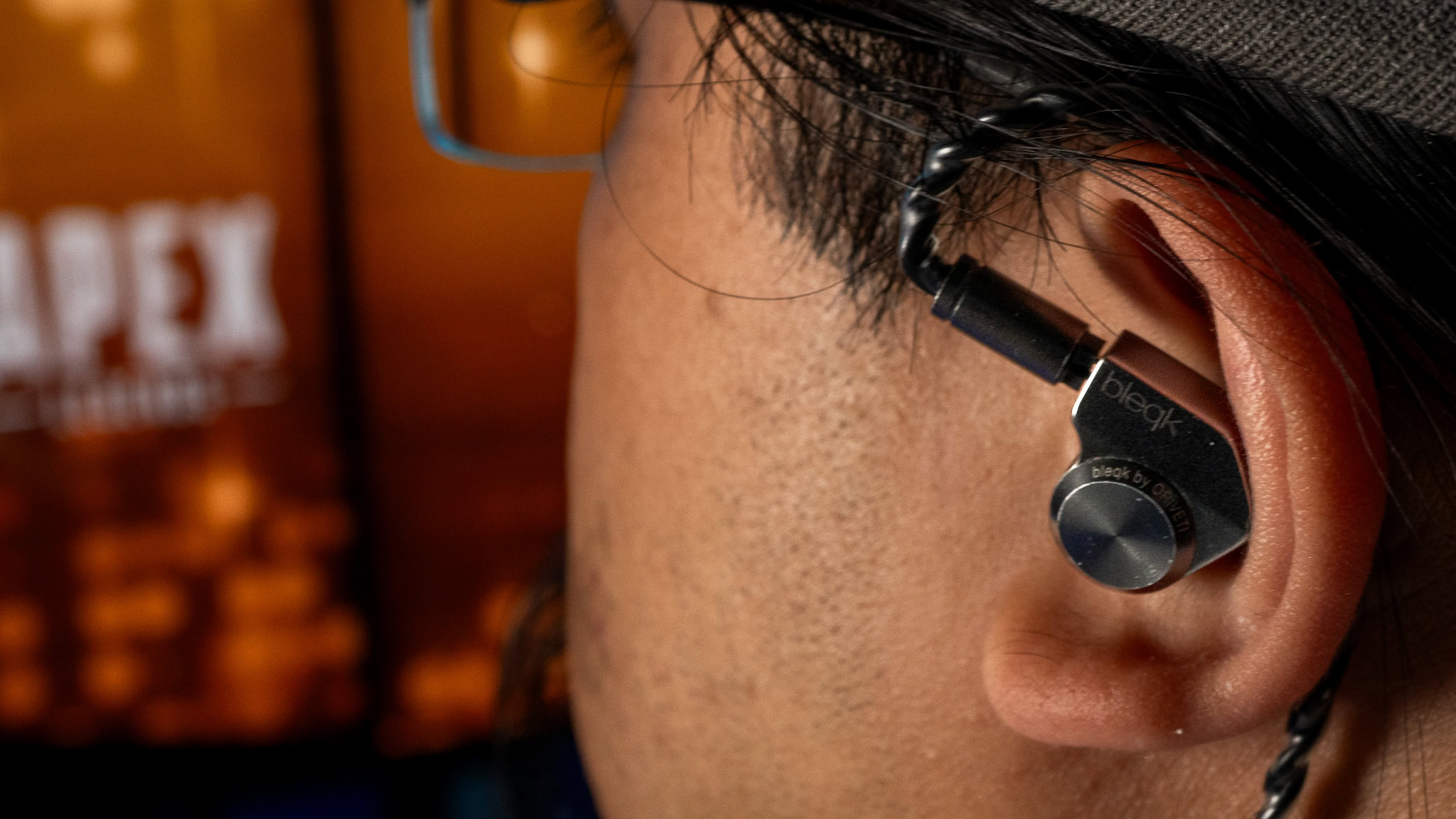For the best gaming experience in e-sport arena shooters like Valorant, Counter-Strike 2, or battle royales such as Fortnite or Apex Legends, you need accurate localization of sounds. Gaming IEMs have become a popular pick, with one of the best I have tried being the Oriveti bleqk Dynabird. From the build to the look, it gives off the edgy gamer aesthetic people have come to expect from a gaming product. The Dynabird isn’t a gaming-specific product, but it specifically does very well in competitive gaming scenarios. It’s a great example of an audio-focused product that does much better than what almost every gaming company puts to market. Oriveti primarily targets the audiophile community with the Dynabird, and for that community, it just slightly misses the mark of being great. Let’s find where else it does well and where it falls apart.
The Oriveti bleqk Dynabird is ideal for competitive gamers looking to get an edge in e-sport gaming.
About this Oriveti bleqk Dynabird review: We tested the Oriveti bleqk Dynabird over a period of 4 weeks. SoundGuys purchased the unit for this review.
This article was published on July 9, 2025, and this is the first version of the article. Updates will follow as the market changes.
What’s it like to use the Oriveti bleqk Dynabird?

Jhaycee Calvez / SoundGuys
Oriveti bleqk Dynabird with the carry case.
The Oriveti Dynabird has a metal chassis with a dark gun metal sheen. Despite having a large round section, it does have that edgy gamer look. After a few weeks of use, the sheen holds up and there aren’t any noticeable scratches even when the earbuds constantly knock against each other when in my pocket.
There’s an included carry case, but as I mentioned, I ungraciously shove these into my pocket or directly into my bag. The carry case is larger than most common pocketable wireless earbud cases and has a mesh divider that allows you to carry extra tips if you desire.
The included cable is supple and doesn’t tangle easily. There is no in-line microphone, although most of the sweaty competitive gamers out there are likely to already have an external mic, it’s something you should be aware of if you also need a microphone. The cable is detachable and terminated in a 2-pin connector to the earbuds. On the other end is the regular 3.5mm TRS connection.
Hooking the cable behind my ear poses no issues, and the fit in the ears doesn’t have any notable pressure points. I was able to wear the Dynabird for over 6 hours without any issues. One issue I have found is that the paper material tuning filter can get damp and block out the sound coming from the drivers. It happens rarely but becomes a common occurrence if I wear them even an hour after leaving the bath and drying myself. If you have wet ears, this may be something to avoid. Alternatively, you can dry your ears before putting them on.
How does the Oriveti bleqk Dynabird connect?

Jhaycee Calvez / SoundGuys
Oriveti bleqk Dynabird is still great to listen to music with.
The Dynabird is terminated in 3.5mm TRS. You don’t need a powerful DAC or Amp in order to drive the earbuds, as I didn’t run into any issues powering the earphones.
How well do the Oriveti bleqk Dynabird block out noise?
There’s only passive noise isolation and no ANC with the Oriveti bleqk Dynabird. I find most rumbling noise of the city around isn’t cut out, but is muffled. The screeching of the commuter trains is no longer painful but still pierces through. Looking at our noise reduction graph, the Dynabird blocks out up to 40 dB of treble and up to 14 dB in the bass regions. The average reduction in noise is 73%.
How do the Oriveti bleqk Dynabird sound?
Where the Dynabird shines is in competitive gaming scenarios. For listening to music, the Oriveti Dynabird is not bad, with some lack in the treble, and a touch of overemphasis in sub-bass.
Multi-Dimensional Audio Quality Scores (MDAQS)
The chart below shows how the Multi-Dimensional Audio Quality Score (MDAQS) algorithm from HEAD acoustics assesses the sound of the Oriveti bleqk Dynabird. The sound quality is rated on a scale from 1.0 (very bad) to 5.0 (very good).

Timbre (MOS-T) represents how faithfully the headphones reproduce the frequency spectrum and temporal resolution (timing information).
Distortion (MOS-D) represents non-linearities and added noise: higher scores mean cleaner reproduction.
Immersiveness (MOS-I) represents perceived source width and positioning: how well virtual sound sources are defined in three-dimensional space.
See here for an explanation of MDAQS, how it works, and how it was developed.
With a 4.5 Timbre score, most people will like how they sound out of the box. The 3.8 Distortion score is higher than the average 3.3 score for IEMs, where only a few are likely to notice any issues. The Immersiveness score of 3.4 is typical as an IEM fires sound directly into the ears, and is the score that competitive gamers should pay attention to.
Reviewer’s notes
Editor’s note: this review uses a hover-enabled glossary to describe sound quality based on a consensus vocabulary. You can read about it here.
Objective Measurements
Compared to our preference curve, the sub-bass has a slight bump, where you’re likely to feel some pressure from the impact of kick drums. The bass mostly follows the curve with a considerable dip in 125Hz, which can make a lot of people’s voices sound less bassy, this tends to add perceived clarity for most voices. The Oriveti Dynabird is underemphasized in the mids up to 1000Hz. This can lead to a tinny sound when paired with energetic treble, gladly it’s not a problem with the Dynabird. There are sections in the treble that have a dip in comparison to the preference, especially at 11KHz. This can lead to a drop in perceived brilliance, where crystalline sounds become dull.
How does the Oriveti bleqk Dynabird Sound in Gaming?

Jhaycee Calvez / SoundGuys
Oriveti bleqk Dynabird is best used in battle royale gaming
When people think of the most important part of audio for competitive games, they tend to look for the most accurate sound positioning, but what’s more important is sound separation and isolation. Sound separation becomes more important because sound position doesn’t matter if you miss audio cues such as an enemy trying to flank you, or a third-party coming from behind, despite having the loud and terribly obvious sounds of a firefight going on.
Isolation comes in with a close second, to keep distractions outside of the game. Passive isolation isn’t the best, but it’s always better than nothing. Leaving spatial width and depth last, despite still being important. With accurate spatial width, you’re able to tell the direction of the flanking enemy, making it easier to pre-aim at the location where they’re likely to break cover. This is especially useful in games like Valorant and CSGO2. You’ll still have to be listening closely since most people with good game sense won’t move quickly to only create footstep sounds until the last moment. With a good spatial depth, you’ll find it easier to tell how far a firefight is, and the easier it is for you to make decisions on where to go on a map if you’re playing battle royale games such as Apex Legends or Fortnite.
In competitive shooters, I was easily able to separate gunfire, enemy movement, ability cues, and team communication. The bass doesn’t lose rumble, it’s never overbearing, and doesn’t cover up team communication. The treble doesn’t have any sharp sibilance that can be distracting, and in a full firefight, there’s a lot of painful treble that can cover up other useful information, such as team communications. I find that despite only having passive isolation, it tends to block out a good chunk of noise, and what does go through isn’t distracting compared to the sound from the game audio. For spatial depth and width, it’s odd that I can even tell if a sound is coming from behind me with scary accuracy, unlike most IEMs where you can only tell that it is from behind. It’s even more accurate to the sides and front, to the point I can differentiate sounds above and below me.
The downside is that the ridiculous sound positioning accuracy can be distracting when you’re just playing a cozy game. It’s probably cool if your cozy games are within the horror genre. The skittering of creatures feels like they’re crawling in the room around you. Mind you, I don’t like horror games, so I didn’t test it for very long in that scenario.
You would think that in action games, the Dynabird would do well. It does well, there are rumbles in bassy sections such as explosions or earthquakes, but it’s not skull rattling. The crack of gunshots doesn’t pierce your ears like it would if you’re right in the middle of the action. It doesn’t feel like you’re completely immersed in the middle of the action.
In dialogue-focused or story-driven games, the Dynabird does well. There’s a great amount of separation that the dialogue is easy to understand, while still enjoying the background music. The background music doesn’t overwhelm the dialogue, even in busy scenes where the music tends to get loud in dramatic or tense moments.
Should you buy the Oriveti bleqk Dynabird?
For the most competitive edge, the Oriveti bleqk Dynabird is worth the money. It’s not going to make you an e-sports superstar overnight, but it can help make it easier to take steps into the professional scene. It does very well in giving all the information you need to make accurate decisions with your game sense, from making sure you can hear team communication in a loud firefight, to locating the position on an enemy flank by sound. If you’re into action games, it doesn’t give off the skull-rattling bass, or the immersiveness of feeling like directly in the middle of the action. Not that it does horrible, it’s that there are better options out there.

Oriveti Bleqk Dynabird
Price • Able to position sound easily • Build quality
Dynabird delivers a sound that caters to the discerning competitive gamer.
The Oriveti Dynabird is great for competitive shooters. The ability to hear and locate the position of the sound is crucial. The Dynabird delivers that, without compromising on sounding good when listening to music or movies.
What should you get instead of the Oriveti bleqk Dynabird?
While the Dynabird does very well in competitive shooters, it doesn’t immerse you in the action. For that, check out the Meze Alba, which is on the opposite end. I wouldn’t recommend them if competitive gaming is your main game of choice, but it puts you in the middle of the action. Cars feel like they whoosh past you at incredible speed, earth-shattering events feel earth-shattering with the rumble of bass, and almost every sound feels like it’s happening right in front of you. On the other hand, if you’re looking for a great all-rounder, there’s the Truthear Hexa, which is great if you’re a variety gamer who hops from genre to genre. It doesn’t excel in anything in particular and doesn’t fail in anything in particular.
Oriveti bleqk Dynabird review: FAQs
Yes, Oriveti is a Chinese-based company.
No, as long as you have a 3.5mm jack, you should be able to drive the Oriveti bleqk Dynabird without an amp.
No, the Oriveti bleqk Dynabird doesn’t have a microphone. You can replace the included wire with another that has an inline mic if you need an inline mic.
No, the Oriveti bleqk Dynabird doesn’t have water resistance.
